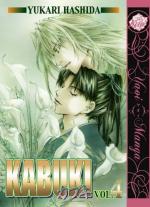|
This section contains 7,677 words (approx. 26 pages at 300 words per page) |

|
SOURCE: Leiter, Samuel L. “From Gay to Gei: The Onnagata and the Creation of Kabuki's Female Characters.” Comparative Drama, 33 (Winter, 1999-2000): 495-514.
In the following essay, Leiter surveys the role of women in Kabuki theater and argues that despite the persistence of patriarchal attitudes, Kabuki was surprisingly fair to and respectful of women, probably because their characters on stage were played on men.
From 1629 to 1877, women were officially forbidden to act in Japan's kabuki theater, which—under the leadership of a former shrine priestess named Okuni—they had founded in 1603. From 1629 on, male actors, the onnagata, played women's roles. The reasons for the banning of actresses have been frequently recounted elsewhere and need not be reexamined here in detail.
At the time, Japanese urban culture was largely under the influence of Confucian ethics and Buddhist religious practice, both being antifemale systems. Whereas, despite endemic misogyny, ancient and...
|
This section contains 7,677 words (approx. 26 pages at 300 words per page) |

|


